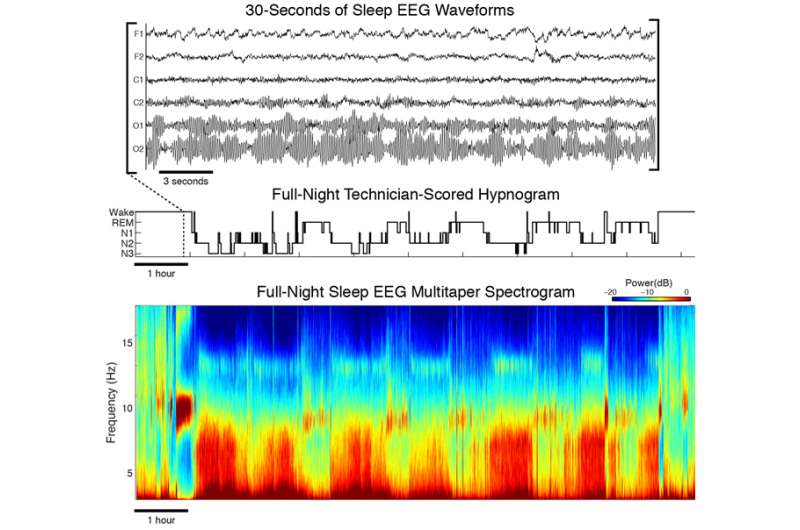

Clinicians can figure out whether one subject has a full rest by analyzing his/her overnight sleep measurement of PSG (polysomnogram) and provide a treatment plan based on the sleep stage inspection. Additionally, stages 3 and 4 are often combined together and refer to deep sleep or slow wave sleep (SWS). NREM is further divided into sleep stages 1, 2, 3, and 4. According to R&K criteria, sleep is categorized by wakefulness (awake), rapid eye movement (REM), and nonrapid eye movement (NREM). Although there are several modifications and many amendments have been made, R&K criteria are still regarded as golden criteria for sleep staging in clinical application. Rechtschaffen and Kales (R&K) defined sleep scoring criteria according to the change in the physiological signals. Physiologically, evaluating the quality of sleep depends on many aspects, including the duration and composition of sleep. It is considered as a necessity of life for humans and animals and is essential to their physical and emotional wellbeing. Sleep is a natural process of humans for recovering energy and body health. Furthermore, it can be a training tool for better understanding the appearance of characteristic waveforms from raw sleep EEG which is mixed and complex in time domain. The obtained results showed that the developed method can highlight the characteristic activity which is useful for both automatic sleep staging and visual inspection. The overnight clinical sleep EEG recordings of 3 patients after the treatment of Continuous Positive Airway Pressure (CPAP) were tested. The effectiveness was further analyzed by automatic sleep stage classification and compared with the visual inspection. The contributions of features from different domains to the sleep stages were compared. The numbers of the characteristic activities were extracted as the features from time domain. The objective is to eliminate the clutter waveform and highlight the characteristic waveform for further analysis. Unlike the traditional feature calculation in time domain, a sequence merging method was developed as a preprocessing procedure. In this study, multidomain feature extraction was investigated based on time domain analysis, nonlinear analysis, and frequency domain analysis. If you take public transportation, you should not travel alone.Feature extraction from physiological signals of EEG (electroencephalogram) is an essential part for sleep staging. It's unsafe for you to drive a vehicle for several hours after the test because you will be sleep deprived and may have been sedated. Have someone drive you to and from the test. Take your usual medications as prescribed by your physician. But avoid caffeine coffee, tea, chocolate, soft drinks, and alcohol for 24 hours prior to the test. Do not use grease, hair spray, oils or conditioners.Įat normally. Wash your hair either the night before or the morning of the EEG. If you are scheduled for a carotid baseline test, which is given to patients when they're wide awake, sleep deprivation isn't required. If you know you won't be able to fall asleep naturally during the EEG, let us know in advance and we'll arrange to administer a mild sedative. Don't sleep during the ride to the hospital. In some cases, patients must stay awake all night. We record a portion of your EEG during natural sleep, so you should get less than half your normal sleep the night before the test. The most important way to prepare for your EEG: Don't sleep. The neurophysiologist sends a report to your doctor, who will discuss the results with you. Later, a trained neurophysiologist interprets these signals. The electrodes pick up your brain's electrical activity and carry it by wires to a computer that amplifies the signals and stores them. This is a painless procedure and the gel or paste is easily removed after the test. The paste is odorless and looks like toothpaste. The gel looks and smells like clear nail polish. The technologist applies electrodes (small metal disks) to your scalp with an adhesive gel or paste. This helps us to diagnose:ĭespite what you might have heard elsewhere, an EEG does not treat or cure illness, read your mind, give you an electric shock or measure your IQ.Ī registered technologist performs EEGs. An Electroencephalogram (EEG) is a brain wave test that detects abnormalities in the electrical activity of the brain.


 0 kommentar(er)
0 kommentar(er)
